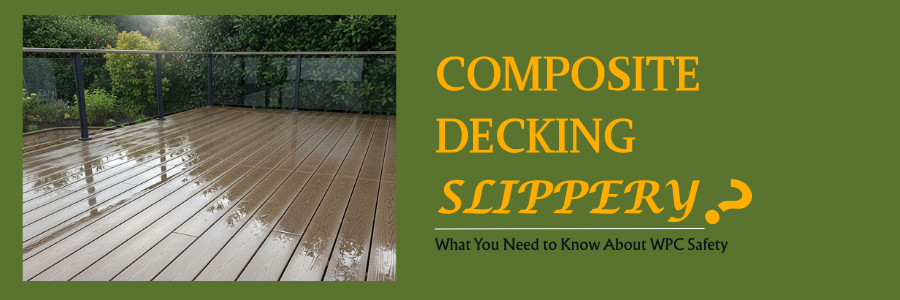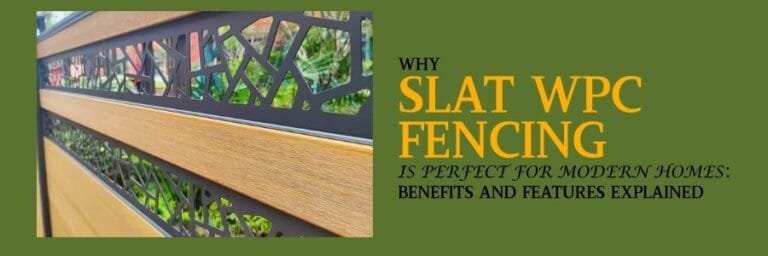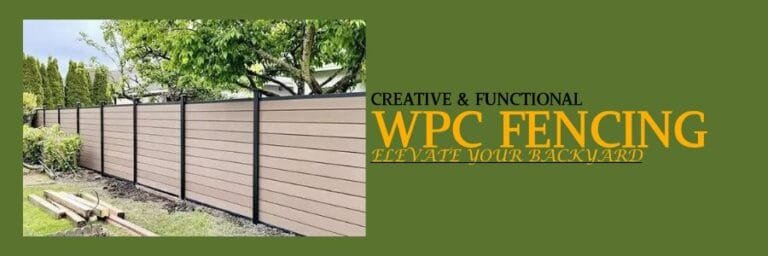Introduction: Why Slip Resistance Matters in Outdoor Decking
It is rare to find a person who hasn’t had a slipping experience in their life. According to the CDC, over 1 million people are hospitalized each year for slip and fall injuries in the U.S.. Slipping can occur anywhere, especially on smooth, improperly maintained decks. However, we can reduce the risk of slips on composite decking through the use of proper surface finishes and installation techniques.
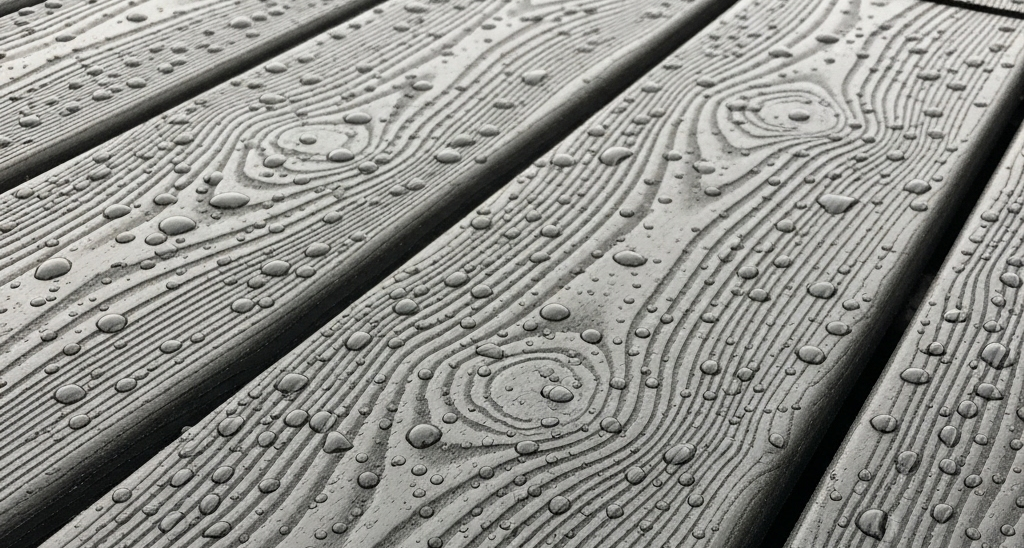
Decks around pools, gardens, and balconies need to be secure in all weather conditions. The presence of water or moisture can make things worse. WPC-based decks can reduce the risk through controlling product quality, surface texture, and treatment. This blog post will explore how composite decking offers slip resistance, tackles slippery decking issues, and how we can reduce the chances of slipping through installation, design, and care. Let’s begin by understanding what causes slippage!
How Do We Measure Composite Deck Slip?
Composite or wood plastic composite (WPC) decks are generally not slippery. However, there are cases in which they can be slippery if the buyer doesn’t fully understand the characteristics of the WPC before installation. Analyzing the specifications that the manufacturer provides with their product is key. Typically “R” rating is used for measuring slip.
The “R” rating is a standardized European classification system for slip resistance. The higher the R number, the greater the resistance to slipping. Here are some examples:
- R9: Low slip resistance (for dry, indoor areas).
- R10: Medium slip resistance (suitable for kitchens and bathrooms).
- R11: Good slip resistance (ideal for outdoor areas, ramps, and patios that are exposed to rain and moisture).
- R12 & R13: High to very high slip resistance (for industrial settings, public pools, and areas with constant water or oil).
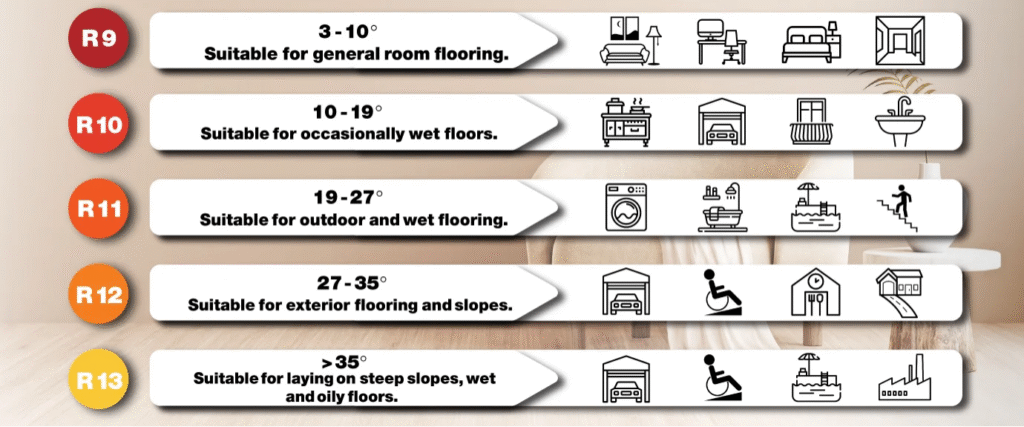
*Tip: Make sure that the manufacturer gives the R rating of the composite deck. Another method to measure is PTV (Pendulum Test Value). However, PTV is not as common as the R rating. PTV is also the same, which means higher PTV means higher resistance to slip.
What Affects the Slip Resistance of Composite Decking
We know from experience that water on a surface increases the risk of slipping. Similarly, there are tons of other factors to consider related to slip. In this section, let’s analyze some of the key factors that affect slip resistance in WPC or composite decking:
Surface Texture and Finish
Having a smooth and glossy surface that shines can also be very slippery. Therefore, manufacturers of composite decking use embossed, grooved, or brushed finishes to increase traction underfoot.
- Surface Finish: Using a matte surface instead of a glossy, shiny surface can improve the R rating to R9 or R10, depending on the depth of matte and anti-reflective surface finish.
- Wood Grain Texture: The addition of 3D-embossed wood grain structure has a significant impact on the R rating. The uneven surface can improve the R rating to R11, which is a good resistance against slippage.
Moisture and Weather Conditions
The presence of moisture in traditional wood can cause the wood to become slippery. The porous nature of wood also provides an ideal place for algae to grow. In a similar manner, snow, rain, and fallen leaves can also influence the surface grip. These can reduce the grip and may cause an increase in slip probability.
Maintenance Habits
Maintaining equipment and civil structure is key. Buildup of grime and mildew that collects from weekend barbeques or body oils can reduce friction. Therefore, regular cleaning, typically at a frequency of daily, is vital for composite desking to perform as per design.
Footwear
The chances of slipping while wearing hard dress shoes are higher than comparison to sneakers with a softer sole. In case of rain, the water acts as a lubricant and increases the chances of slip and fall.
How WPC Tackles Slippery Decking Issues
Now that we have reasons that can cause a slippery deck, we can move on to how WPC tackles these slippery decking issues through different aspects:
Anti-Slip Surface Technology
The modern WPC material comes with an anti-slip surface. It achieves this through the use of different textures and surface finishes. A successful brand like KR WPC uses the coextrusion process, which allows it to cap a polymer layer over the actual WPC material. The polymer protects the core by adding a “water-proof” layer over the actual material. It also uses wood-like texture and finish to ensure better grip, typically with an R11 rating.
Moreover, the use of grooved WPC decking can enhance the anti-slip characteristics. It breaks the water layer to ensure better contact between footwear or bare feet with the decking board.
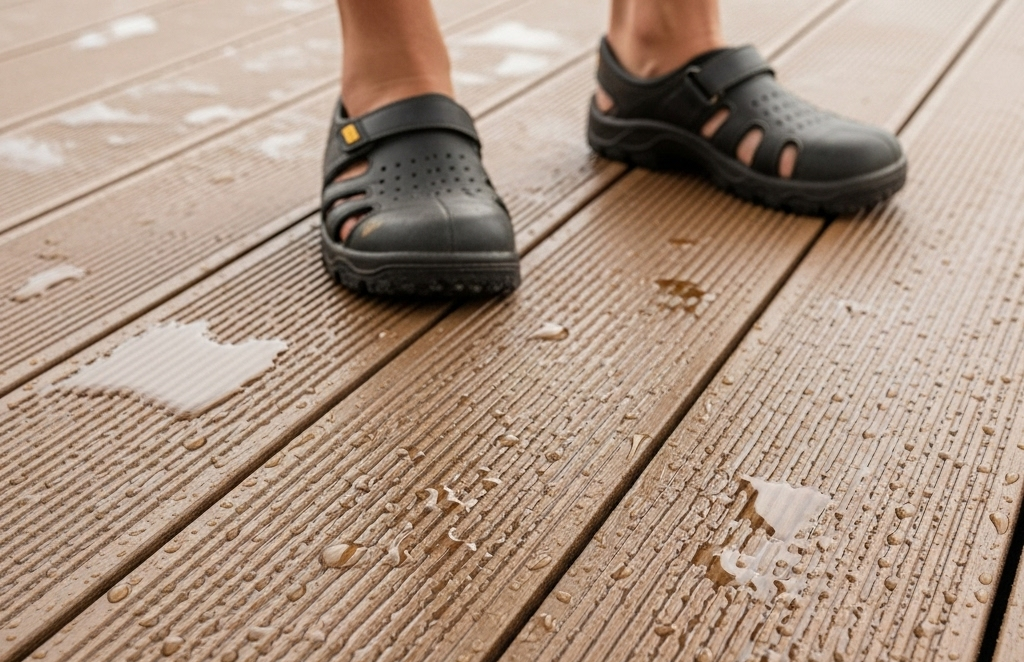
Resistance to Mold and Algae
The composite boards that also have a polymer layer as a material cap provide a non-porous surface in comparison to wood. The chances of organic buildup are greatly reduced. Mold and algae do not have a surface to take hold and grow. Mold and algae need a food source and moisture to grow. The wood fiber in WPC is covered with thermoplastics, making the food source unreachable for both. Similarly, moisture is also key for them to thrive and multiply, which WPC does not allow into its material structure.
Long-Term Grip Performance
The precise engineering of WPC composite deck ensures grip performance year-round in high-traffic or humid zones. For example, rubbing a surface for a long time makes it shinier, which means that it loses its slip resistance. Similarly, in high-traffic zones, people walking can cause the surface to lose its grip and become shinier. These are especially dangerous in areas like a pool where the presence of water is inevitable. Therefore, texture alongside surface finish is equally important for long-term grip. KR WPC uses deep embossing with wood-grain structure to combine the warm feeling of aesthetics with a practical increase in grip.
Enhancing Deck Safety with Design and Care
While texture, surface finish, and material can significantly impact slip, users can also combine alternative techniques with composite decking. Here are three things that owners can do to reduce the chances of slip and fall:
Strategic Layout for Drainage and Grip
There are a few things that can be done at the installation phase of decking.
- Slope: The slope of the deck can have a significant impact in places where there is a significant presence of water. A slope of ⅛ inch per foot is a gentle slope that users will not feel, but it helps drain water and ensure proper grip to the surface.
- Deck Board Gap: Adding space between adjacent boards can also help drain water effectively. The water can sweep to one side due to the slope and find its way to the group through the gap.
- Decking Orientation: Installing the deck boards perpendicular to the walking direction of the user can improve grip. The gaps improve the friction overall.
Regular Cleaning and Anti-Slip Accessories
Cleaning a high-end composite deck material like KR WPC is convenient. There are no special chemicals to clean the surface. A mild detergent is enough to clean up the entire deck. The non-porous nature of the composite deck also contributes to the ease of cleaning. Moreover, the use of anti-slip mats/rugs in key areas can also reduce the chances of slipping significantly.
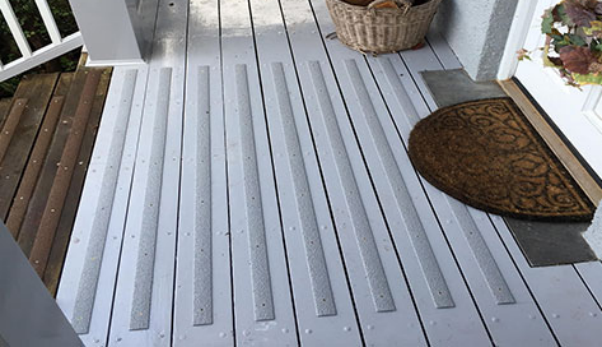
When to Add Non-Slip Coatings or Tapes
Another way to prevent slippage is the use of accessories that can act as an extra step to safety. Clear markings and tapes on ramps, steps, and shaded corners can alert the user to be extra conscious about their step and movement. Addition of non-slip coatings can add an extra layer of protection against slippage by providing enhanced grip through the use of a rough surface.
Conclusion: Safe, Stylish, and Smart
Ensuring a safe deck for users of all ages is vital. It involves the use of high-quality, long-lasting, engineered WPC deck boards. They can offer proper grip through the use of surface finish, texture, and manufacturing techniques. Using a polymer to cover the wood inside the WPC can make the surface non-porous, leading to tons of benefits. There is no change of algae or mold to take over that can be slimy. Moreover, 3D-embossed wood texture can add to the grip.
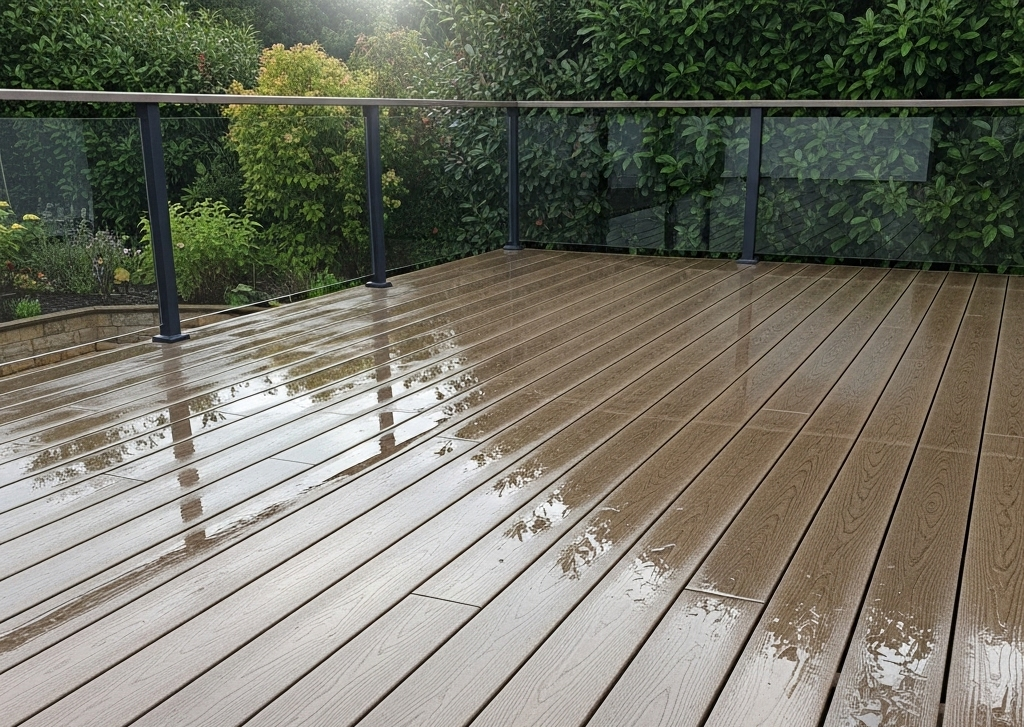
Installation techniques and external accessories can also help prevent slippage. However, the primary selection of WPC board for installation is the first and most critical step. If you are looking for 3D-embossed, R11-rated, polymer coextruded, and wood texture composite decking, then consider KR WPC. Their WPC boards are made from 60% wood fiber and 30% HDPE. They are waterproof, fireproof, and resistant to rot and termites. KR WPC deck stays safe and looks aesthetically pristine throughout the year and in all seasons.
FAQ
- Which type of composite decking has the best grip?
3D-embossed, textured, co-extruded WPC with 60% wood fiber and 30% HDPE is ideal for decking. They provide the best grip as mold, algae, and moisture cannot reach the inner wood fiber of WPC.
- Does textured WPC decking make a real difference?
Using a textured WPC enables a better grip, especially in the presence of water. The water layer breaks up, ensuring direct contact with the surface. It also increases the slip resistance rating, for example, up to R11. Textured surface makes WPC decking safer.
- How do I clean algae or mold from my composite deck?
Composite decks of high quality do not require any special chemicals for the removal of algae or mold. Composite decks inherently do not allow algae and mold to build up. If water remains on deck for an extended period, a simple detergent and water solution can effectively remove algae or mold.
- What’s the difference between grooved and smooth composite boards?
The key difference between grooved and smooth composite boards is the increase in grip. The grooves break the water layer to improve contact and resistance. Moreover, the grooves help drain water and ensure minimal water contact.
- Do anti-slip coatings damage WPC surfaces?
The use of thermoplastics enables the WPC to become 100% compatible with anti-slip coatings. However, there can be some coatings that may damage the polymer, so always check the product label. The anti-slip coatings efficiently adhere to the WPC surface and increase grip and lower the chances of slips.

